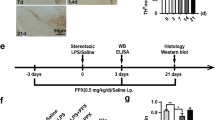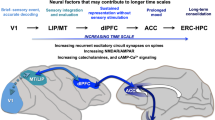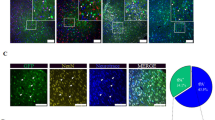Abstract
Lysosomes regulate cellular metabolism to maintain cell survival, but the mechanisms whereby they determine neuronal cell fate after acute metabolic stress are unknown. Neuron-enriched lysosomal membrane protein LAMP2A is involved in selective chaperone-mediated autophagy and exosome loading. This study demonstrates that abnormalities in the neuronal LAMP2A-lysosomal pathway cause neurological deficits following ischemic stroke and that this is an early inducer of the PANoptosis-like molecular pathway and neuroinflammation, simultaneously inducing upregulation of FADD, RIPK3, and MLKL after ischemia. Quantitative proteomic and pharmacological analysis showed that after acute metabolic stress, the neuronal LAMP2A pathway induced acute synaptic degeneration and PANoptosis-like responses involving downregulation of protein kinase A (PKA) signaling. LAMP2A directed post-stroke lysosomal degradation of adenylyl cyclases (ADCY), including ADCY1 and ADCY3 in cortical neurons. Post-stroke treatment with cAMP mimetic or ADCY activator salvaged cortical neurons from PANoptosis-like responses and neuroinflammation, suggesting that the neuronal ADCY–cAMP–PKA axis is an upstream arrester of the pathophysiological process following an ischemic stroke. This study demonstrates that the neuronal LAMP2A-lysosmal pathway drives intricate acute neurodegenerative and neuroinflammatory responses after brain metabolic stress by downregulating the ADCY–PKA signaling cascade, and highlights the therapeutic potential of PKA signal inducers for improving stroke outcomes.
This is a preview of subscription content, access via your institution
Access options
Subscribe to this journal
Receive 12 print issues and online access
269,00 € per year
only 22,42 € per issue
Buy this article
- Purchase on SpringerLink
- Instant access to full article PDF
Prices may be subject to local taxes which are calculated during checkout








Similar content being viewed by others
Data availability
The original data in the study are included in this article or the supplementary material. Additional data are available upon reasonable request.
References
GBD 2019 Stroke Collaborators. Global, regional, and national burden of stroke and its risk factors, 1990–2019: a systematic analysis for the Global Burden of Disease Study 2019. Lancet Neurol. 2021;20:795–820.
Huang KL, Hsiao IT, Ho MY, Hsu JL, Chang YJ, Chang TY, et al. Investigation of reactive astrogliosis effect on post-stroke cognitive impairment. J Neuroinflammation. 2020;17:308.
Sarraj A, Mlynash M, Heit J, Pujara D, Lansberg M, Marks M, et al. Clinical outcomes and identification of patients with persistent penumbral profiles beyond 24 h from last known well: Analysis from DEFUSE 3. Stroke. 2021;52:838–49.
Rost NS, Brodtmann A, Pase MP, van Veluw SJ, Biffi A, Duering M, et al. Post-stroke cognitive impairment and dementia. Circ Res. 2022;130:1252–71.
Rangaraju V, Calloway N, Ryan TA. Activity-driven local ATP synthesis is required for synaptic function. Cell. 2014;156:825–35.
Pulido C, Ryan TA. Synaptic vesicle pools are a major hidden resting metabolic burden of nerve terminals. Sci Adv. 2021;7:eabi9027.
Jones TA. Motor compensation and its effects on neural reorganization after stroke. Nat Rev Neurosci. 2017;18:267–80.
Yao GY, Zhu Q, Xia J, Chen FJ, Huang M, Liu J, et al. Ischemic postconditioning confers cerebroprotection by stabilizing VDACs after brain ischemia. Cell Death Dis. 2018;9:1033.
Xia J, Zhang T, Sun Y, Huang Z, Shi D, Qin D, et al. Suppression of neuronal CDK9/p53/VDAC signaling provides bioenergetic support and improves post-stroke neuropsychiatric outcomes. Cell Mol Life Sci. 2024;81:384.
Tuo QZ, Lei P, Jackman KA, Li XL, Xiong H, Li XL, et al. Tau-mediated iron export prevents ferroptotic damage after ischemic stroke. Mol Psychiatry. 2017;22:1520–30.
Poh L, Kang SW, Baik SH, Ng GYQ, She DT, Balaganapathy P, et al. Evidence that NLRC4 inflammasome mediates apoptotic and pyroptotic microglial death following ischemic stroke. Brain Behav Immun. 2019;75:34–47.
Naito MG, Xu D, Amin P, Lee J, Wang H, Li W, et al. Sequential activation of necroptosis and apoptosis cooperates to mediate vascular and neural pathology in stroke. Proc Natl Acad Sci USA. 2020;117:4959–70.
Zhang Y, Li M, Li X, Zhang H, Wang L, Wu X, et al. Catalytically inactive RIP1 and RIP3 deficiency protect against acute ischemic stroke by inhibiting necroptosis and neuroinflammation. Cell Death Dis. 2020;11:565.
Yan WT, Zhao WJ, Hu XM, Ban XX, Ning WY, Wan H, et al. PANoptosis-like cell death in ischemia/reperfusion injury of retinal neurons. Neural Regen Res. 2023;18:357–63.
Pandian N, Kanneganti TD. PANoptosis: A unique innate immune inflammatory cell death modality. J Immunol. 2022;209:1625–33.
Rothaug M, Stroobants S, Schweizer M, Peters J, Zunke F, Allerding M, et al. LAMP-2 deficiency leads to hippocampal dysfunction but normal clearance of neuronal substrates of chaperone-mediated autophagy in a mouse model for Danon disease. Acta Neuropathol Commun. 2015;3:6.
Ferreira JV, da Rosa Soares A, Ramalho J, Máximo Carvalho C, Cardoso MH, Pintado P, et al. LAMP2A regulates the loading of proteins into exosomes. Sci Adv. 2022;8:eabm1140.
Tanaka Y, Guhde G, Suter A, Eskelinen EL, Hartmann D, Lüllmann-Rauch R, et al. Accumulation of autophagic vacuoles and cardiomyopathy in LAMP-2-deficient mice. Nature. 2000;406:902–6.
Manso AM, Hashem SI, Nelson BC, Gault E, Soto-Hermida A, Villarruel E, et al. Systemic AAV9.LAMP2B injection reverses metabolic and physiologic multiorgan dysfunction in a murine model of Danon disease. Sci Transl Med. 2020;12:eaax1744.
Hase K, Contu VR, Kabuta C, Sakai R, Takahashi M, Kataoka N, et al. Cytosolic ___domain of SIDT2 carries an arginine-rich motif that binds to RNA/DNA and is important for the direct transport of nucleic acids into lysosomes. Autophagy. 2020;16:1974–88.
Yardeni M, Weisman O, Mandel H, Weinberger R, Quarta G, Salazar-Mendiguchía J, et al. Psychiatric and cognitive characteristics of individuals with Danon disease (LAMP2 gene mutation). Am J Med Genet A. 2017;173:2461–6.
Alcalai R, Arad M, Wakimoto H, Yadin D, Gorham J, Wang L, et al. LAMP2 cardiomyopathy: Consequences of impaired autophagy in the heart. J Am Heart Assoc. 2021;10:e018829.
Bourdenx M, Martín-Segura A, Scrivo A, Rodriguez-Navarro JA, Kaushik S, Tasset I, et al. Chaperone-mediated autophagy prevents collapse of the neuronal metastable proteome. Cell. 2021;184:2696–2714.e25.
Park Y, Liu C, Luo T, Dietrich WD, Bramlett H, Hu B. Chaperone-mediated autophagy after traumatic brain injury. J Neurotrauma. 2015;32:1449–57.
Cuervo AM, Stefanis L, Fredenburg R, Lansbury PT, Sulzer D. Impaired degradation of mutant alpha-synuclein by chaperone-mediated autophagy. Science. 2004;305:1292–5.
Napolitano G, Johnson JL, He J, Rocca CJ, Monfregola J, Pestonjamasp K, et al. Impairment of chaperone-mediated autophagy leads to selective lysosomal degradation defects in the lysosomal storage disease cystinosis. EMBO Mol Med. 2015;7:158–74.
Ostrom KF, LaVigne JE, Brust TF, Seifert R, Dessauer CW, Watts VJ, et al. Physiological roles of mammalian transmembrane adenylyl cyclase isoforms. Physiol Rev. 2022;102:815–57.
Kirchner P, Bourdenx M, Madrigal-Matute J, Tiano S, Diaz A, Bartholdy BA, et al. Correction: Proteome-wide analysis of chaperone-mediated autophagy targeting motifs. PLoS Biol. 2022;20:e3001550.
Wei Y, Miao Q, Zhang Q, Mao S, Li M, Xu X, et al. Aerobic glycolysis is the predominant means of glucose metabolism in neuronal somata, which protects against oxidative damage. Nat Neurosci. 2023;26:2081–9.
Xu M, Guo Y, Wang M, Luo X, Shen X, Li Z, et al. L-arginine homeostasis governs adult neural stem cell activation by modulating energy metabolism in vivo. EMBO J. 2023;42:e112647.
Zhang M, Lu H, Xie X, Shen H, Li X, Zhang Y, et al. TMEM175 mediates Lysosomal function and participates in neuronal injury induced by cerebral ischemia-reperfusion. Mol Brain. 2020;13:113.
Ahsan A, Liu M, Zheng Y, Yan W, Pan L, Li Y, et al. Natural compounds modulate the autophagy with potential implication of stroke. Acta Pharm Sin B. 2021;11:1708–20.
Han B, Jiang W, Cui P, Zheng K, Dang C, Wang J, et al. Microglial PGC-1α protects against ischemic brain injury by suppressing neuroinflammation. Genome Med. 2021;13:47.
Hwang I, Kim BS, Lee HY, Cho SW, Lee SE, Ahn JY. PA2G4/EBP1 ubiquitination by PRKN/PARKIN promotes mitophagy protecting neuron death in cerebral ischemia. Autophagy. 2024;20:365–79.
Hu M, Li P, Wang C, Feng X, Geng Q, Chen W, et al. Parkinson’s disease-risk protein TMEM175 is a proton-activated proton channel in lysosomes. Cell. 2022;185:2292–2308.e20.
Zhang J, Zeng W, Han Y, Lee WR, Liou J, Jiang Y. Lysosomal LAMP proteins regulate lysosomal pH by direct inhibition of the TMEM175 channel. Mol Cell. 2023;83:2524–2539.e7.
Van Opdenbosch N, Lamkanfi M. Caspases in cell death, inflammation, and disease. Immunity. 2019;50:1352–64.
Newton K, Wickliffe KE, Dugger DL, Maltzman A, Roose-Girma M, Dohse M, et al. Cleavage of RIPK1 by caspase-8 is crucial for limiting apoptosis and necroptosis. Nature. 2019;574:428–31.
Neel DV, Basu H, Gunner G, Bergstresser MD, Giadone RM, Chung H, et al. Gasdermin-E mediates mitochondrial damage in axons and neurodegeneration. Neuron. 2023;111:1222–1240.e9.
Karlowitz R, van Wijk SJL. Surviving death: Emerging concepts of RIPK3 and MLKL ubiquitination in the regulation of necroptosis. FEBS J. 2023;290:37–54.
Liu S, Liu H, Johnston A, Hanna-Addams S, Reynoso E, Xiang Y, et al. MLKL forms disulfide bond-dependent amyloid-like polymers to induce necroptosis. Proc Natl Acad Sci USA. 2017;114:e7450–e7459.
Johnston AN, Ma Y, Liu H, Liu S, Hanna-Addams S, Chen S, et al. Necroptosis-blocking compound NBC1 targets heat shock protein 70 to inhibit MLKL polymerization and necroptosis. Proc Natl Acad Sci USA. 2020;117:6521–30.
Liu S, Perez P, Sun X, Chen K, Fatirkhorani R, Mammadova J, et al. MLKL polymerization-induced lysosomal membrane permeabilization promotes necroptosis. Cell Death Differ. 2024;31:40–52.
Tummers B, Mari L, Guy CS, Heckmann BL, Rodriguez DA, Rühl S, et al. Caspase-8-dependent inflammatory responses are controlled by its adaptor, FADD, and necroptosis. Immunity. 2020;52:994–1006.e1008.
Patzke C, Brockmann MM, Dai J, Gan KJ, Grauel MK, Fenske P, et al. Neuromodulator signaling bidirectionally controls vesicle numbers in human synapses. Cell. 2019;179:498–513.e22.
Gao F, Yang S, Wang J, Zhu G. cAMP-PKA cascade: an outdated topic for depression? Biomed Pharmacother. 2022;150:113030.
Filous AR, Silver J. Targeting astrocytes in CNS injury and disease: a translational research approach. Prog Neurobiol. 2016;144:173–87.
Prescott K, Münch AE, Brahms E, Weigel MM, Inoue K, Buckwalter MS, et al. Blocking formation of neurotoxic reactive astrocytes is beneficial following stroke. Front Mol Neurosci. 2023;16:1305949.
Huerta M, Urzúa Z, Trujillo X, González-Sánchez R, Trujillo-Hernández B. Forskolin compared with beclomethasone for prevention of asthma attacks: a single-blind clinical trial. J Int Med Res. 2010;38:661–8.
Majeed M, Nagabhushanam K, Natarajan S, Vaidyanathan P, Karri SK, Jose JA. Efficacy and safety of 1% forskolin eye drops in open angle glaucoma-An open label study. Saudi J Ophthalmol. 2015;29:197–200.
Nederveen JP, Mastrolonardo AJ, Xhuti D, Di Carlo A, Manta K, Fuda MR, et al. Novel multi-ingredient supplement facilitates weight loss and improves body composition in overweight and obese individuals: a randomized, double-blind, placebo-controlled clinical trial. Nutrients. 2023;15:3693.
Rundfeldt C, Steckel H, Sörensen T, Wlaź P. The stable cyclic adenosine monophosphate analogue, dibutyryl cyclo-adenosine monophosphate (bucladesine), is active in a model of acute skin inflammation. Arch Dermatol Res. 2012;304:313–7.
Caballero B, Bourdenx M, Luengo E, Diaz A, Sohn PD, Chen X, et al. Acetylated tau inhibits chaperone-mediated autophagy and promotes tau pathology propagation in mice. Nat Commun. 2021;12:2238.
Kuo SH, Tasset I, Cheng MM, Diaz A, Pan MK, Lieberman OJ, et al. Mutant glucocerebrosidase impairs α-synuclein degradation by blockade of chaperone-mediated autophagy. Sci Adv. 2022;8:eabm6393.
Chen J, Li Y, Wang L, Zhang Z, Lu D, Lu M, et al. Therapeutic benefit of intravenous administration of bone marrow stromal cells after cerebral ischemia in rats. Stroke. 2001;32:1005–11.
Xu Y, Wang ML, Tao H, Geng C, Guo F, Hu B, et al. ErbB4 in parvalbumin-positive interneurons mediates proactive interference in olfactory associative reversal learning. Neuropsychopharmacology. 2022;47:1292–303.
Du CP, Gao J, Tai JM, Liu Y, Qi J, Wang W, et al. Increased tyrosine phosphorylation of PSD-95 by Src family kinases after brain ischaemia. Biochem J. 2009;417:277–85.
Acknowledgements
The authors gratefully acknowledge Ms. Jie Zhao (Animal Experimental Center of Public Experimental Platform, China Pharmaceutical University) for her assistance with behavioral experiments.
Funding
This study was supported by grants from the National Natural Science Foundation of China (No. 82173801 and 81673418).
Author information
Authors and Affiliations
Contributions
D.S., Y.B. performed biochemical and molecular biology experiments, lysosomal isolation and substrate analysis. R.L. and M.D. performed quantitative proteomic analysis. D.S., J.X. and W.X. performed experiments on primary neurons. D.S., Y.B., D.Q. and X.Y. performed neurofunctional assessment and behavioral experiments. D.S., Y.B. and R.L. conducted data analysis and visualization. M.D. and X.Y.H. planned the experimental design. X.Y.H. conceived and supervised the project. D.S., W.X. and X.Y.H. wrote the paper with feedback from all authors.
Corresponding authors
Ethics declarations
Ethics
All experiments were approved by the Institutional Animal Care and Use Committee of China Pharmaceutical University and were conducted in accordance with the ARRIVE guidelines.
Competing interests
The authors declare no competing interests.
Additional information
Publisher’s note Springer Nature remains neutral with regard to jurisdictional claims in published maps and institutional affiliations.
Supplementary information
Rights and permissions
Springer Nature or its licensor (e.g. a society or other partner) holds exclusive rights to this article under a publishing agreement with the author(s) or other rightsholder(s); author self-archiving of the accepted manuscript version of this article is solely governed by the terms of such publishing agreement and applicable law.
About this article
Cite this article
Shi, D., Bai, Y., Long, R. et al. Neuronal LAMP2A-mediated reduction of adenylyl cyclases induces acute neurodegenerative responses and neuroinflammation after ischemic stroke. Cell Death Differ 32, 337–352 (2025). https://doi.org/10.1038/s41418-024-01389-0
Received:
Revised:
Accepted:
Published:
Issue Date:
DOI: https://doi.org/10.1038/s41418-024-01389-0
This article is cited by
-
Targeting HPK1 inhibits neutrophil responses to mitigate post-stroke lung and cerebral injuries
EMBO Molecular Medicine (2025)
-
PANoptosis: a potential target of atherosclerotic cardiovascular disease
Apoptosis (2025)
-
Synergistic effects of repeated transcranial magnetic stimulation and mesenchymal stem cells transplantation on alleviating neuroinflammation and PANoptosis in cerebral ischemia
Journal of Neuroinflammation (2024)



